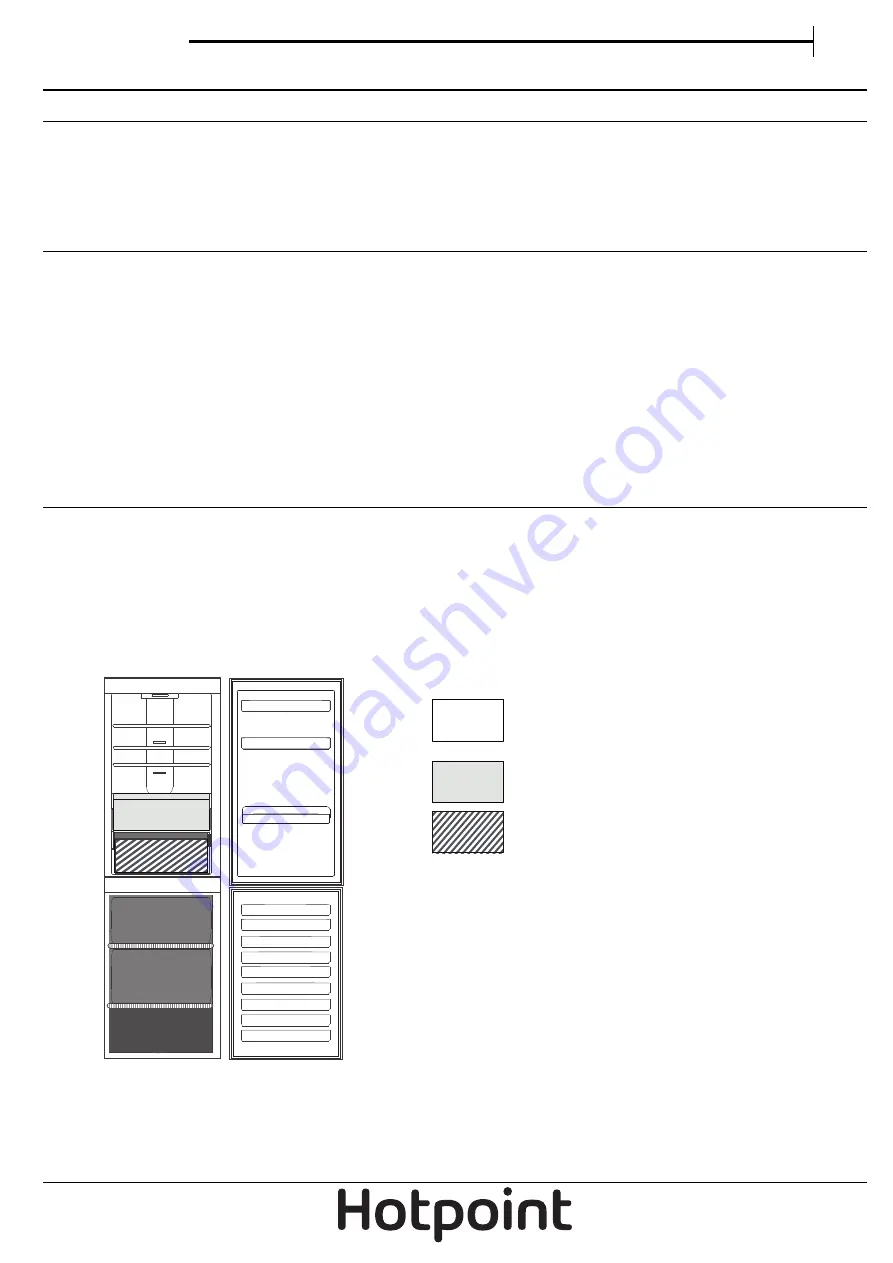
Use & Care guide
EN
6
How to use the appliance
First time use
Before connecting the appliance, clean the compartments and accessories well with lukewarm water and bicarbonate.
After plugging the appliance to the mains, it starts the operation automatically.
After starting the appliance, wait at least 4-6 hours before placing food into the appliance.
When the appliance is connected to the power supply, the display lights up and all the icons appear on the display for
approximately 1 second. The default (factory) values of the fridge compartment settings light-up.
Refrigerator compartment and food storage
The refrigerator compartment allows for the storage of fresh food and drink. The refrigerator compartment defrosts completely
automatically. The occasional presence of drops of water on the internal back wall of the compartment is a sign of the automatic
defrosting phase. The defrosting water is channelled into a drain and then collected in a container, where it evaporates.
Note: the ambient temperature, how often the doors are opened and the position of the appliance may affect the internal temperatures
in the two compartments. Set the temperatures depending on these factors. In very humid conditions, condensation may form in the
refrigerator compartment, especially on the glass shelves. In this case, it is recommended that you close containers with liquids in (e.g. a pot
of stock), wrap up food with a high water content (e.g. vegetables) and turn on the fan, if there is one. All of the drawers, door shelves and
shelves can be removed.
Air ventilation
The natural circulation of air in the refrigerator compartment results in zones with different temperatures. It is coldest directly
above the fruits and vegetables crisper and at the rear wall. It is warmest at the top front of the compartment. Insufficient
ventilation results in an increase in energy consumption and reduction of the refrigerating performance.
How to store fresh food and beverages
Foods which give off a large amount ethylene gas (apples, apricots, pears, peaches, avocado, figs, prunes, blueberries, mellons,
beans) and those that are sensitive to this gas, such as fruit vegetables and salad, should always be separated or wrapped so as
not to reduce the storage life; for example do not store tomatoes together with kiwi fruits or cabbage. Do not store food too
close together to enable sufficient air circulation. Use recyclable plastic, metal, aluminum and glass containers and cling film to
wrap foods. If you have a little quantity of food to store in the refrigerator, we recommend to use the shelves above the crisper
for fruits and vegetables since this is the coolest area of the compartment. Always use closed containers for liquids and for food
that may give off or be tainted by odor or flavor transfer or cover them. To avoid bottles falling over, you can use the bottle
holder (available on selected models).
Legend
TEMPERATE ZONE
Suggested for storage of tropical fruit, cans, drinks,
eggs, sauces, pickles, butter, jam
FRUIT AND VEGETABLE DRAWER
COOL ZONE
Suggested for the storage of cheese, milk, daily food,
delicatessen, yogurt
Содержание H7NT911TWH1
Страница 1: ...www hotpoint eu register User Manual...































